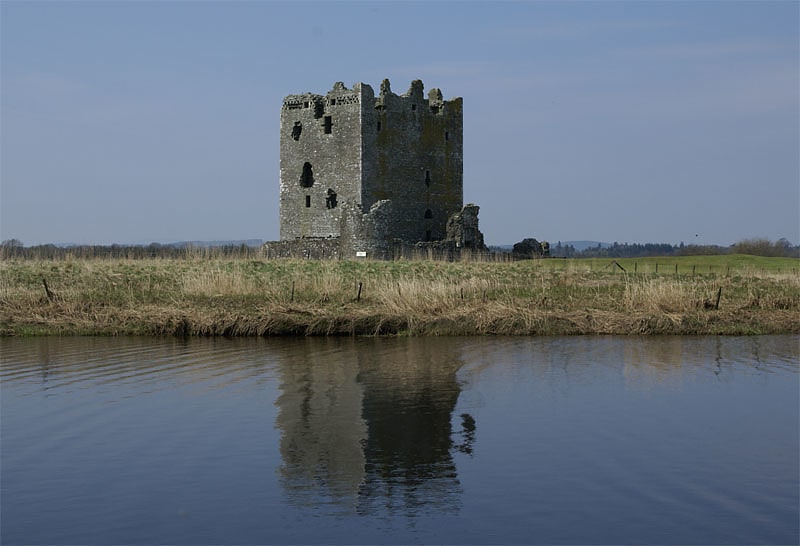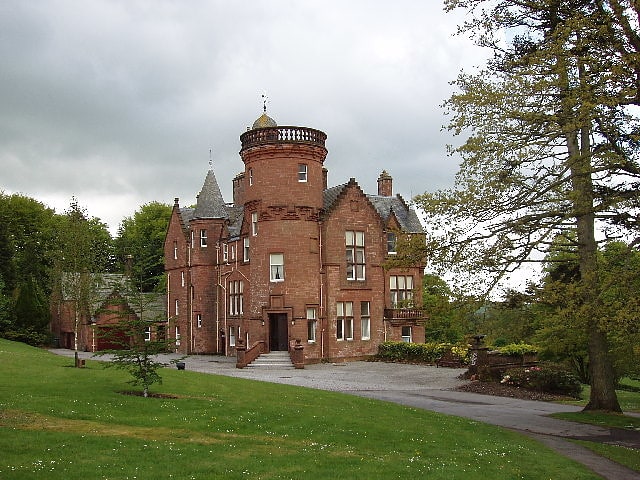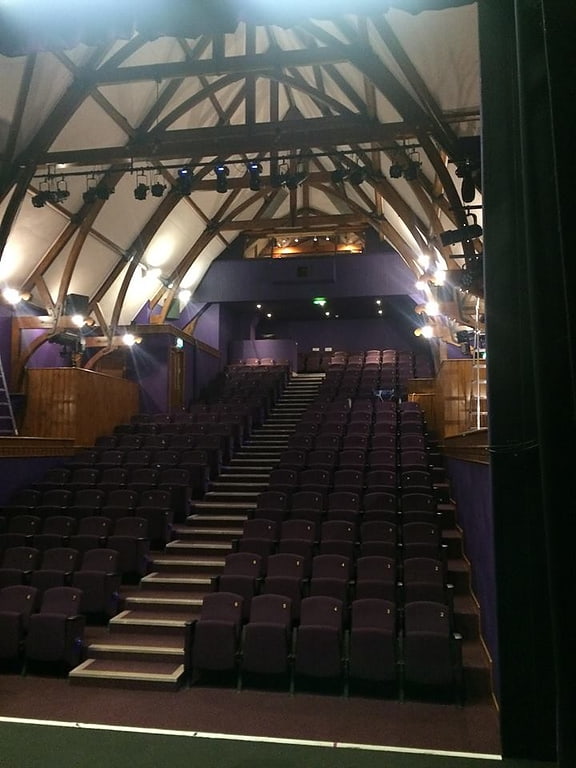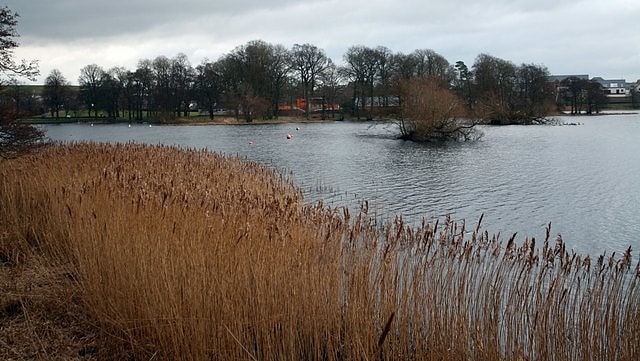Discover 5 hidden attractions, cool sights, and unusual things to do in Castle Douglas (United Kingdom). Don't miss out on these must-see attractions: Threave Castle, Threave Gardens, and The Fullarton. Also, be sure to include Carlingwark Loch in your itinerary.
Below, you can find the list of the most amazing places you should visit in Castle Douglas (Scotland).
Table of Contents
Threave Castle

1369 tower ruins reachable by ferry boat. Threave Castle is situated on an island in the River Dee, 2.5 kilometres west of Castle Douglas in the historical county of Kirkcudbrightshire in the Dumfries and Galloway region of Scotland.
Built in the 1370s by Archibald the Grim, it was a stronghold of the "Black Douglases", Earls of Douglas and Lords of Galloway, until their fall in 1455. For part of this time, the castle and the lordship of Galloway were controlled by Princess Margaret, daughter of King Robert III and widow of the 4th Earl. In 1449 Threave was regained by the 8th earl, Scotland's most powerful magnate, who controlled extensive lands and numerous castles. He fortified Threave with an "artillery house", a sophisticated defence for its time. The excessive power of the Black Douglas lords led to their overthrow by King James II in 1455, after which Threave was besieged and captured by the King's men.
It became a royal castle, and in the 16th century hereditary responsibility for Threave was given to the Lords Maxwell. It was briefly held by the English in the 1540s, but did not see serious action until the Bishops' Wars, when in 1640 a royalist garrison was besieged by a force of Covenanters. Partially dismantled, the castle remained largely unused until given into state care in 1913. The ruins, comprising the substantially complete tower house and the L-shaped artillery house, are today maintained by Historic Environment Scotland as a scheduled monument.
The castle complex is open to the public.[1]
Address: Castle Douglas, DG7 1TJ Kirkcudbright
Threave Gardens

Garden in Scotland. Threave Garden and Estate is a series of gardens owned and managed by the National Trust for Scotland, located near Castle Douglas in the historical county of Kirkcudbrightshire in Dumfries and Galloway region of Scotland.
Covering 64 acres (26 ha), the gardens are part of the 1,500 acres (607 ha) Threave Estate originally developed by William Gordon who bought the estate in 1867. The garden is home to the Practical School of Horticulture.
The gardens include a working walled garden, a rock garden, several ponds and water features. There is also a visitor centre and plant centre. The wider estate is managed as a nature reserve and is home to bats and ospreys, and includes part of the Loch Ken and River Dee Marshes Special Protection Area. Threave Castle is located on an island in the River Dee, at the north-west side of the estate.
The garden is listed in the Inventory of Gardens and Designed Landscapes in Scotland, the national listing of significant gardens, which is maintained by National Trust for Scotland.[2]
Address: Threave Estate, DG 7 1 Castle Douglas
The Fullarton

The Fullarton is a performing arts theatre and entertainment venue in the town of Castle Douglas in the historical county of Kirkcudbrightshire in Dumfries and Galloway, Scotland.
Before the acquisition and opening of The Fullarton (then Lochside Theatre) in 1990, Castle Douglas had previously only one theatre called the Little Theatre, in an old army hut run by the Unity Players. It was closed in the 1970s due to a failure in requirements to run safely as a theatre. In 1984, the late Donald Fullarton, (whose daughter Morag Fullarton is a theatre and television director), a member of the Scottish Community Drama Association subsequently formed the Galloway Arts Project with the help of local amateur dramatics clubs.
The former St Andrew's Church became available in the 1990s, and was subsequently purchased by the project and funding was provided by both the Stewartry District Council and the Dumfries and Galloway Regional Council. In the mid 1990s, further major funds were provided by the newly founded National Lottery and opened as a functioning theatre in 1996.
The theatre was refurbished in 2013 in order to meet changing requirements for performance spaces, and was changed from the Lochside Theatre to The Fullarton Theatre in tribute to Donald Fullarton.
Currently, it holds performances, conferences and also is used as a local cinema. It is also used by the member clubs of the Scottish Community Drama Association, most recently holding the SCDA One-Act Western Divisional Festival in March 2018.[3]
Carlingwark Loch

Loch in Scotland. Carlingwark Loch is a small freshwater loch in the historical county of Kirkcudbrightshire, Dumfries and Galloway, Scotland lying just south of Castle Douglas and is roughly rectangular in shape, trending nearly north and south. The name of the loch comes from the Scots Gaelic word Caer meaning fort and wark the old Scots language word for work. There are four artificial islets in the loch showing evidence of fortification and settlement, Ash Island is thought to be a crannog. Several archaeological finds have been retrieved from the loch including a bronze cauldron, sword and pan and two dugout canoes.
Carlingwark Lane Canal is a 1.5 mile canal which opened between the loch and the River Dee, 1.5 miles away in 1765. It remained in use until its abandonment in about 1840, allowing flat-bottomed boats to transport shell-marl to farms along the route.
There is a 5.25 km (3.26 mi) footpath around the loch and it is popular for bird watching and fishing. As of 5 March 2012 the loch and the land around it has been designated as a Site of Special Scientific Interest on account of its varied birdlife and grassland.
In 1903 the loch was surveyed by E.R. Watson and later charted as part of The Bathymetrical Survey of Fresh-Water Lochs of Scotland 1897–1909.
In 2009 an aerating fountain was installed at a cost of £10,000 to try to prevent the build-up of blue-green algae. The funding was provided by South West Scotland Environmental Action Trust. The installation of the fountain was part of a wider development of Carlingwark Outdoor Activity Centre by Dumfries and Galloway Council. However, further research showed that, owing to the relatively shallow depth of the loch, the fountain is ineffective and its use was discontinued. Barley straw, added twice a year, has been used very successfully up to 2019 to reduce the blue-green algae levels.[4]
Threave Castle

Address: Kelton Mains, Threave Estate, Castle Douglas